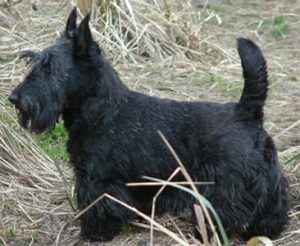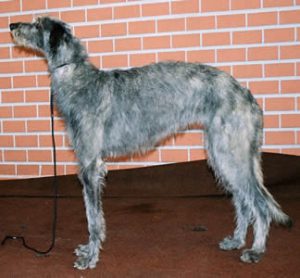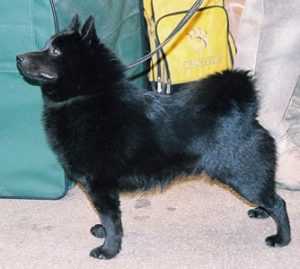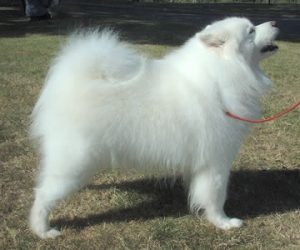
The Scottish Terrier (also known as the Aberdeen Terrier), popularly called the Scottie, is a breed of dog. Initially one of the highland breeds of Terrier that were grouped under the name of Skye Terrier, it is one of five breeds of terrier that originated in Scotland, the other four being the modern Skye, Cairn, Dandie Dinmont, and West Highland White Terrier. They are an independent and rugged breed with a wiry outer coat and a soft dense undercoat. Nicknamed the “diehard”, a nickname which originated from the Fourth Earl of Dumbarton. The modern breed is said to be able to trace its lineage back to a single female, named Splinter II.
They are a small breed of Terrier with a distinctive shape and have had many roles in popular culture. They have been owned by a variety of celebrities, including President George W. Bush, and are well known for being a playing piece in the board game Monopoly. Described as a territorial, feisty dog, they can make a good watchdog but tend to be very loyal to their family. In health issues, Scottish Terriers can be more prone to bleeding disorders, joint disorders, autoimmune diseases, allergies, and cancer than some other breeds of dog and there is a condition named after the breed called Scotty cramp. They are also one of the more successful dog breeds at the Westminster Kennel Club Dog Show with a recent best in show in 2010.
Appearance
A Scottish Terrier is a small but resilient terrier with a muscular body and neck (a typical neck circumference is 14 inches), often appearing to be barrel chested. They are short-legged, cobby and sturdily built, with a long head in proportion to their size. The Scottie should have large paws adapted for digging. Erect ears and tail are salient features of the breed. Their eyes are small, bright and almond-shaped and dark brown or nearly black in colour.
Height at withers for both sexes should be roughly 25 cm (9.8 in), and the length of back from withers to tail is roughly 28 cm (11 in). Generally a well-balanced Scottie dog should weigh from 8.5 to 10 kg (19 to 22 lb) and a female from 8 to 9.5 kg (18 to 21 lb). It is about 10 to 11 inches (25 to 28 cm) in height.
The Scottie typically has a hard, wiry, long, weather-resistant outer coat and a soft dense under coat. The coat is typically trimmed and blended, with a longer coat on the beard, eyebrows, legs and lower body — traditionally shaggy-to-the-ground. The head, ears, tail and back are traditionally trimmed short.
The coat colours range from dark grey to jet black, or ‘Brindle’ (a mix of black and brown). Scotties with ‘Wheaten’ (straw to nearly white) coats sometimes occur, but should not be confused with the Soft-Coated Wheaten Terrier or West Highland White Terrier.
Temperament
Scotties are territorial, alert, quick moving and feisty, perhaps even more so than other terrier breeds. The breed is known to be independent and self-assured, playful, intelligent and has been nicknamed the ‘Diehard’ because of its rugged nature and endless determination. The ‘Diehard’ nickname was originally given to it in the 19th century by George, the fourth Earl of Dumbarton. The Earl had a famous pack of Scottish Terriers, so brave that they were named “Diehards”. They were supposed to have inspired the name of his Regiment, The Royal Scots, “Dumbarton’s Diehards”.
Scotties, while being described as very loving, have also been described as stubborn. They are sometimes described as an aloof breed, although it has been noted that they tend to be very loyal to their family and are known to attach themselves to one or two people.
It has been suggested that the Scottish Terrier can make a good watchdog due to its tendency to bark only when necessary and because it is typically reserved with strangers, although this is not always the case. They have been described as a fearless breed that may be aggressive around other dogs unless introduced at an early age. Scottish Terriers were originally bred to hunt and fight badgers. Therefore, the Scottie is prone to dig as well as chase small vermin, such as Squirrels, rats, and mice.
—————————————————————————————————————–
CARING FOR YOUR DOG NEWSLETTER – Delivered Directly To Your Inbox – Starting Immediately – SIGN UP FOR FREE TODAY
—————————————————————————————————————–




